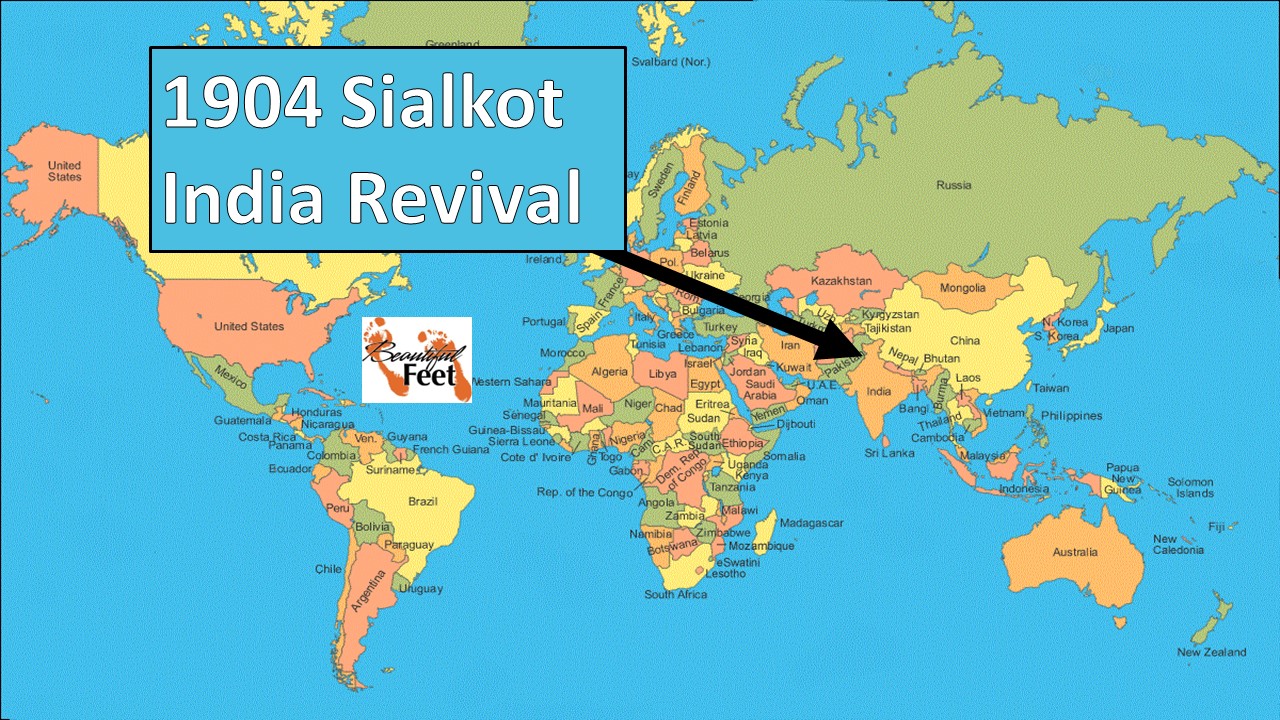
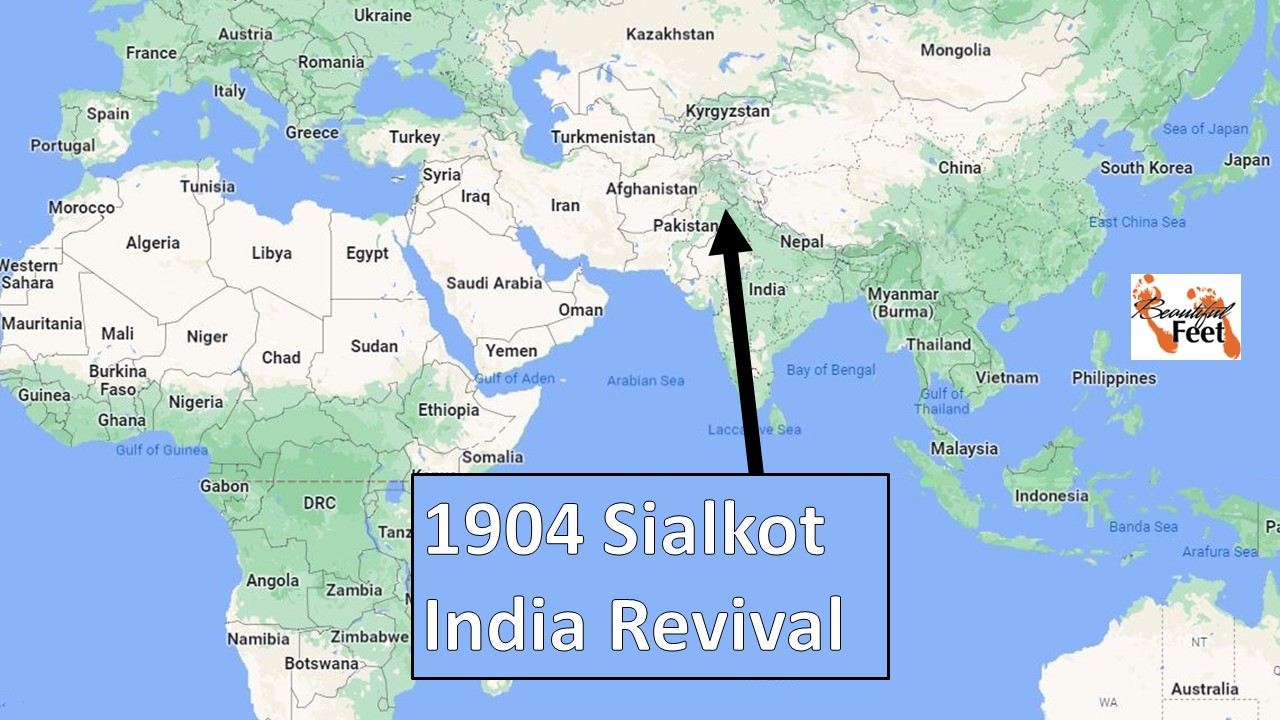
Introduction
The mission station in India’s Punjab region was started in 1856 by a Church of Scotland missionary. From that date till the late 1800s, there was little fruit from the few missionaries who were serving in that region. During the 1890s, and continuing till 1904, the disheartened missionaries, with almost no conversions taking place, were led to believe that only prayer would be effective in breaking the stronghold of the region.
This desperate state set in motion a convention that would focus on prayer, as well as the spiritual life of the missionaries and the handful of Indian believers.
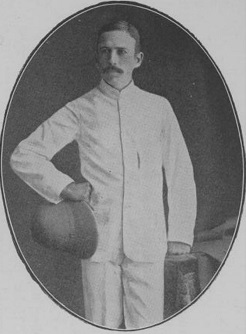
“Praying Hyde”
John Nelson Hyde
Extraordinary Prayer—Punjab Prayer Union
In April 1904, Presbyterian missionary John Hyde, and several other missionaries, laid the foundation for the Punjab Prayer Union. Those wanting to participate in this prayer union were first asked several questions:
► Are you praying for quickening in your own life, in the life of your fellow-workers, and in the church?
► Are you longing for greater power of the Holy Spirit in your own life and work, and are you convinced that you cannot go on without this power?
► Will you pray that you may not be ashamed of Jesus?
► Do you believe that prayer is the great means for securing this spiritual awakening?
► Will you set apart one-half hour each day as soon after noon as possible to pray for this awakening, and are you willing to pray until the awakening comes?
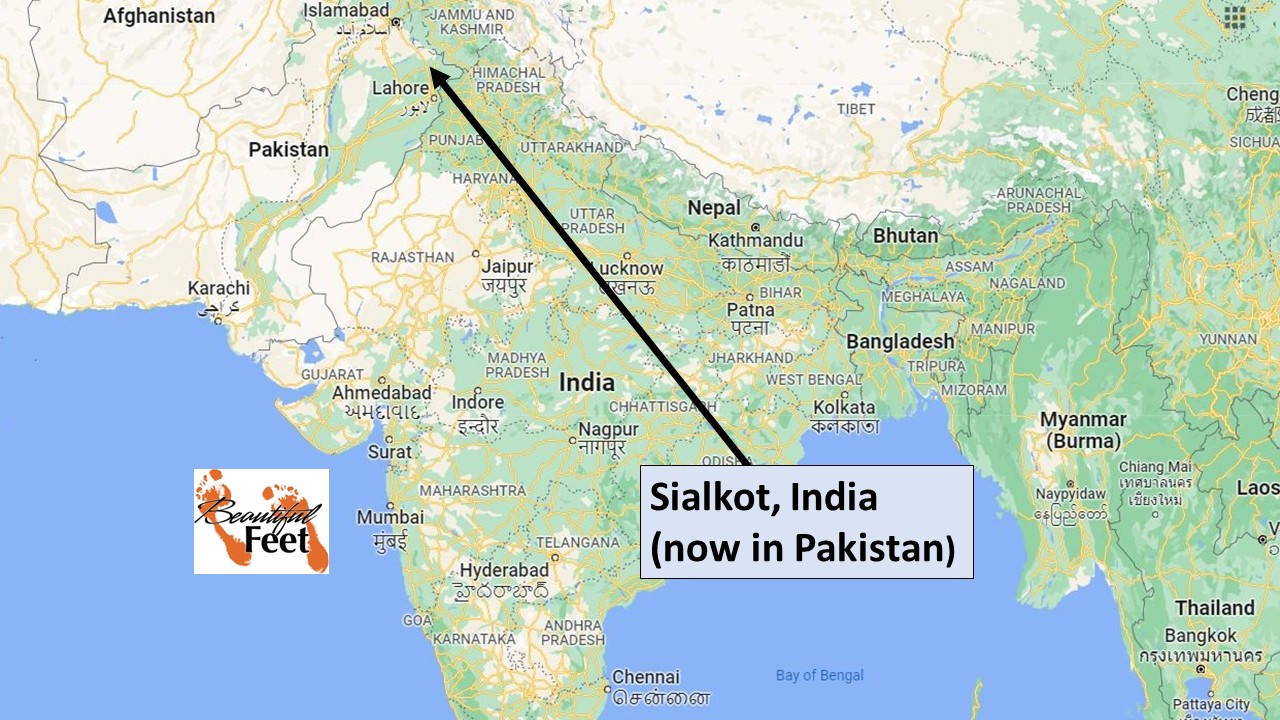
1904 10-Day Convention (Punjab Prayer Union)
To address this need of prayer, the Presbyterians planned a 10-day convention to be held in late August 1904, in the city of Sialkot, at the Presbyterian Mission center. Invitations to the convention were sent throughout India, encouraging missionaries and Indian believers to gather in late August. This convention had such tremendous results that it became an annual convention that continued several decades.
One month prior to the start of the 1904 convention, John Hyde, with several other missionaries, spent days and nights praying for an outpouring of the Holy Spirit.
During the convention, the prayer rooms, one for men and one for women, were never vacant. Missionaries and Indian believers remained in these rooms, constantly in prayer.
During an assembly of those gathered in 1904, John Hyde took about 15 minutes to speak to the assembled men, and he said of that occasion:
I remember how the little company prostrated themselves upon the mats in the Oriental manner, and then how for a long time, man after man rose to his feet to pray, how there was such confession of sin as most of us had never heard before and such crying out to God for mercy and help.
It was very late that night when the little gathering broke up and some of us know definitely of several lives that were wholly transformed through the influence of that meeting.
A missionary present during one of the meetings at the convention recorded the Urdu words that John Hyde said before there was an outpouring of the Spirit, and it consisted of but three words:
Ai Asmani Bak,” (O Heavenly Father.)
What followed who can describe? It was as if a great ocean came sweeping into that assembly. Hearts were bowed before that Divine Presence as the trees of a wood before a mighty tempest. It was the ocean of God’s love being outpoured through one man’s obedience. Hearts were broken before it. There were confessions of sins, with tears that were soon changed to joy, and then to shouts of rejoicing. Truly, we were filled with new wine, the new wine of Heaven!
Another missionary commented of that convention:
There was breadth and freedom during those ten days that I never imagined existed on earth. Surely it was for freedom such as this that Christ has set us free. Each one did exactly as he or she felt led to do. Some went to bed early, some prayed all night long. Some went to the meetings and some to the prayer room and some to their own rooms. Some prayed, some praised. Some sat to pray, some kneeled, some lay prostrate on their faces before God, just as the Spirit of God bade them.
There was no criticism, no judging of what was being done or said. Each one realized that all superficialities were put away, that each one was in the awful presence of the Holy God.
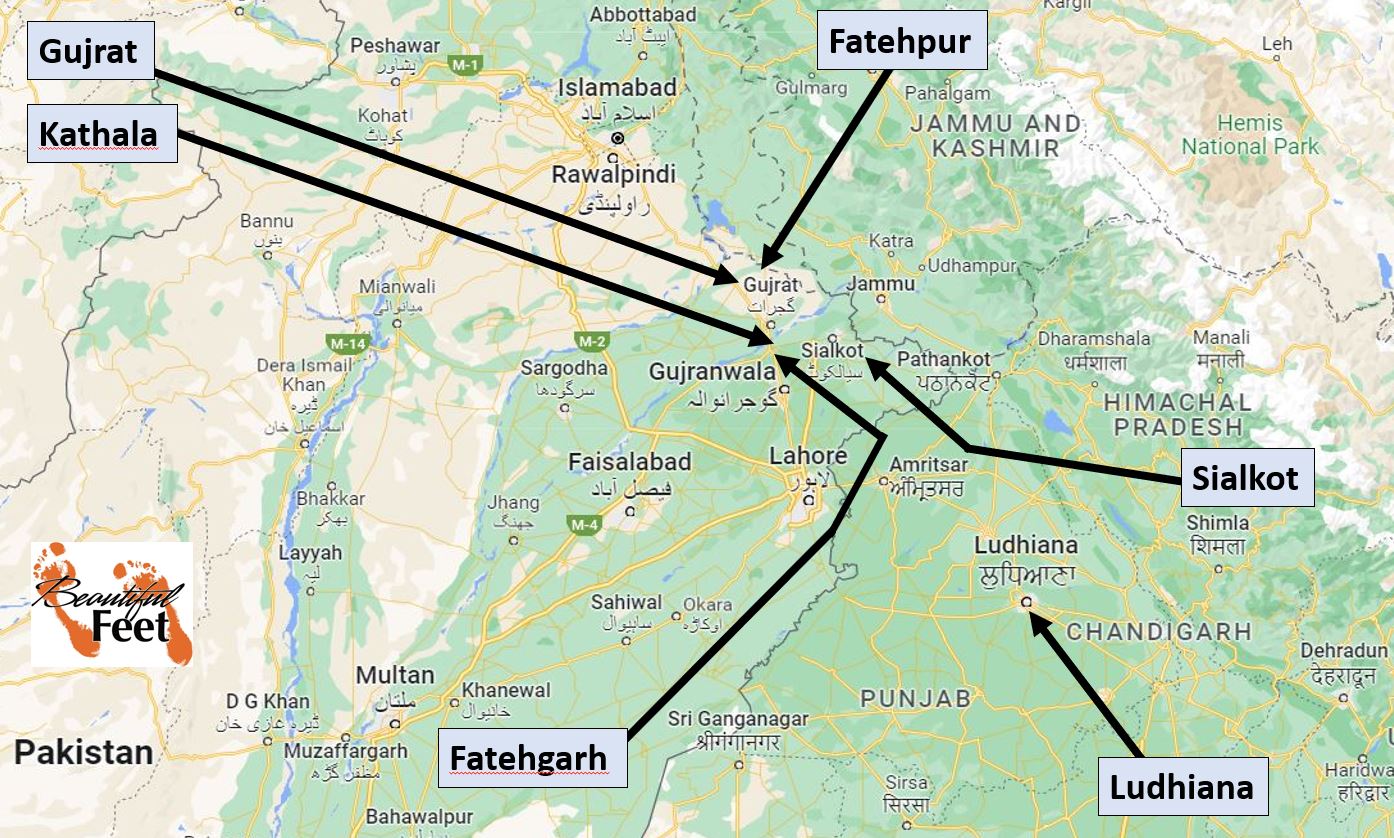
Locations mentioned in this revival account
1905 Sialkot Convention
At the second Sialkot Convention, which convened from August 25 till September 3, 1905, there were 300 Punjabi believers present, along with a few missionaries, mostly from Scotland and the United States.
The prayer rooms were occupied the entire time, with people even spending entire nights there. The prayers were not those of a despairing type, but ones that were filled with praise and rejoicing.
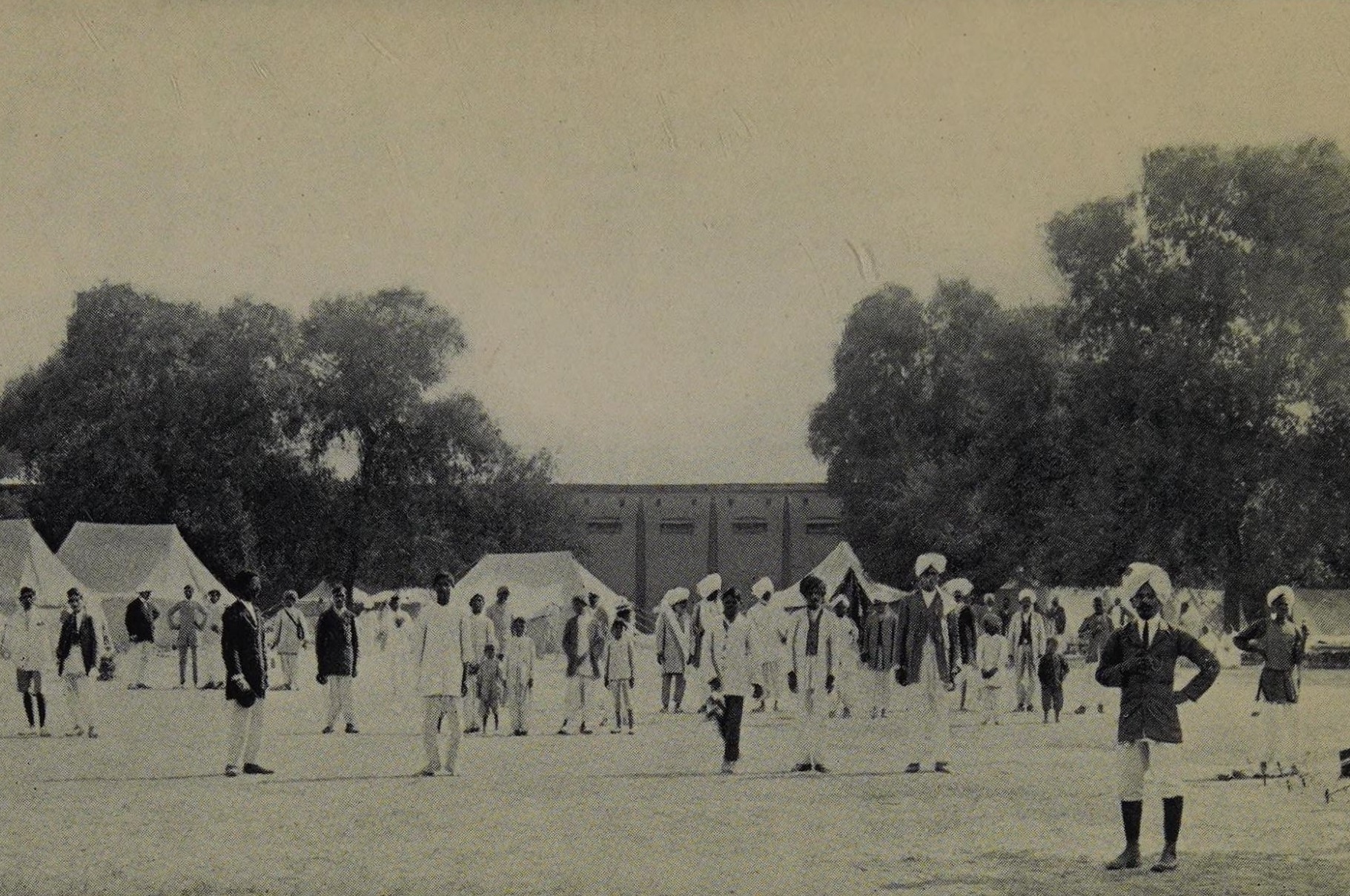
Some of the men’s tents during the 1912 Convention
Bible Studies at the Convention
One Bible study was planned to be given each morning of the 10-day convention, focusing on the topic of the Holy Spirit. Often these teachings were interrupted by the Holy Spirit Himself, and the men set their notes to the side while the Holy Spirit taught the people directly, through a demonstration of His power.
The presence of the Holy Spirit in this fashion led to intense conviction of sin among every person present: missionaries, Indian believers, men, women, boys, and girls. This conviction led to open confession of sin, and with the burden of sin lifted, the result was instant peace and joy, demonstrated in tremendous rejoicing.
Y.M.C.A. Camp
The Y.M.C.A., along with the Presbyterian mission in the Punjab, arranged for a students’ camp to be held at Kathala, near Gujrat.
There were 35 that were expected to attend, but 140 came. The result was something similar to what had just occurred at Sialkot, with the prayer room becoming the center of the camp, rather than the meetings. And like at Sialkot, the scheduled program was set to the side as the Holy Spirit took over and did what He wanted to do. Here are a few of the features of this Y.M.C.A Camp:
► Praise and rejoicing filled the camp, as people were freely singing, demonstrating the new life that had come to them.
► People were openly sharing what God had done in their lives.
► Some groups were going into the village every day to preach the Gospel.
► There was a new desire for Bible study.
A man wrote the following about that Y.M.C.A. Camp meeting:
…I saw a Punjabi brother convulsed and sobbing as if his heart would break. I went up to him and put my arms around him and said, ‘The blood of Jesus Christ cleanseth us from all sin.’
A smile lit up his face. ‘Thank God, Sahib,” he cried, ‘but oh, what an awful vision I have had! Thousands of souls in this land of India being carried away by the dark river of sin! They are in hell now. Oh, to snatch them from the fire before it is too late!’
That meeting was one that will never leave my memory. It went on all night. It was a time when God’s power was felt as I had never felt it before.
Boys’ School Experiences Revival
A student at the Christian Boys’ School in Ludhiana, Punjab, received a tremendous blessing during his attendance at the 1905 Sialkot Convention. Upon his return to his school, he told others about it. This led to the Holy Spirit’s presence immediately moving upon several of the boys, resulting in prayer and praise. Other things that occurred at this school:
► An older boy was so convicted of his sins he felt led to confess it publicly.
► Children, from 6-20 years old, were all brought under the conviction of the Holy Spirit.
► One of the main teachers in the school confessed that what they were witnessing was a genuine work of the Holy Spirit.
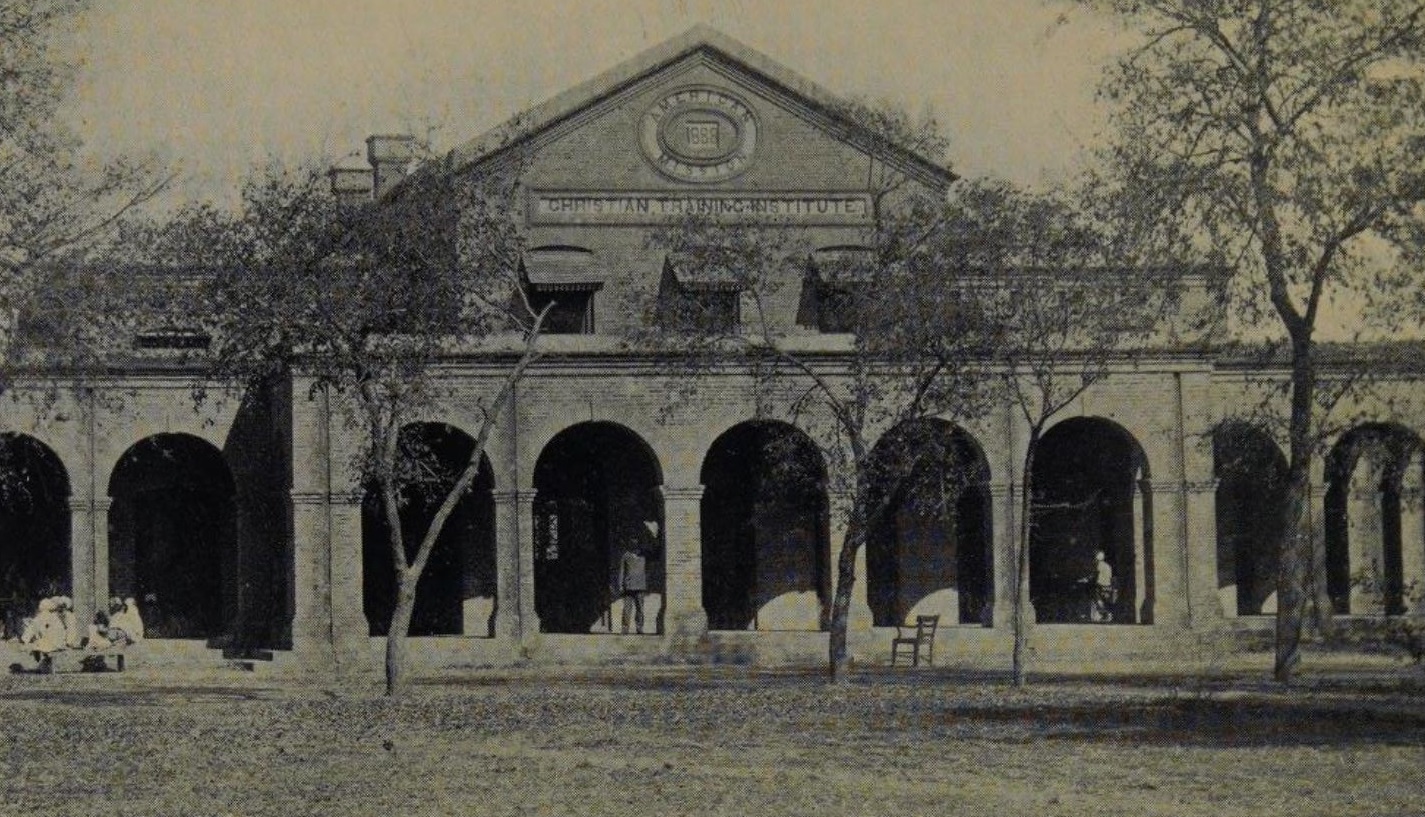
First three Sialkot Conventions were held
in the Christian Training Institute Hall.
Third Sialkot Convention (1906)
The 1906 Sialkot Convention was open to all denominations, and not only Presbyterians. This led the numbers present at the convention to exceed the 300 who were in attendance the year before. During this 1906 convention there were 1,300 present, in addition to 70 missionaries. This openness to other denominations led to all of India benefiting from the convention’s influence.
Instead of there being a prayer room, like what was used in previous years, the Scottish Mission was used. And for the women’s prayer room, a tent was used.
Similar to the previous Sialkot Conventions, there were many who would spend entire nights in prayer, with the atmosphere being filled with the presence of God.
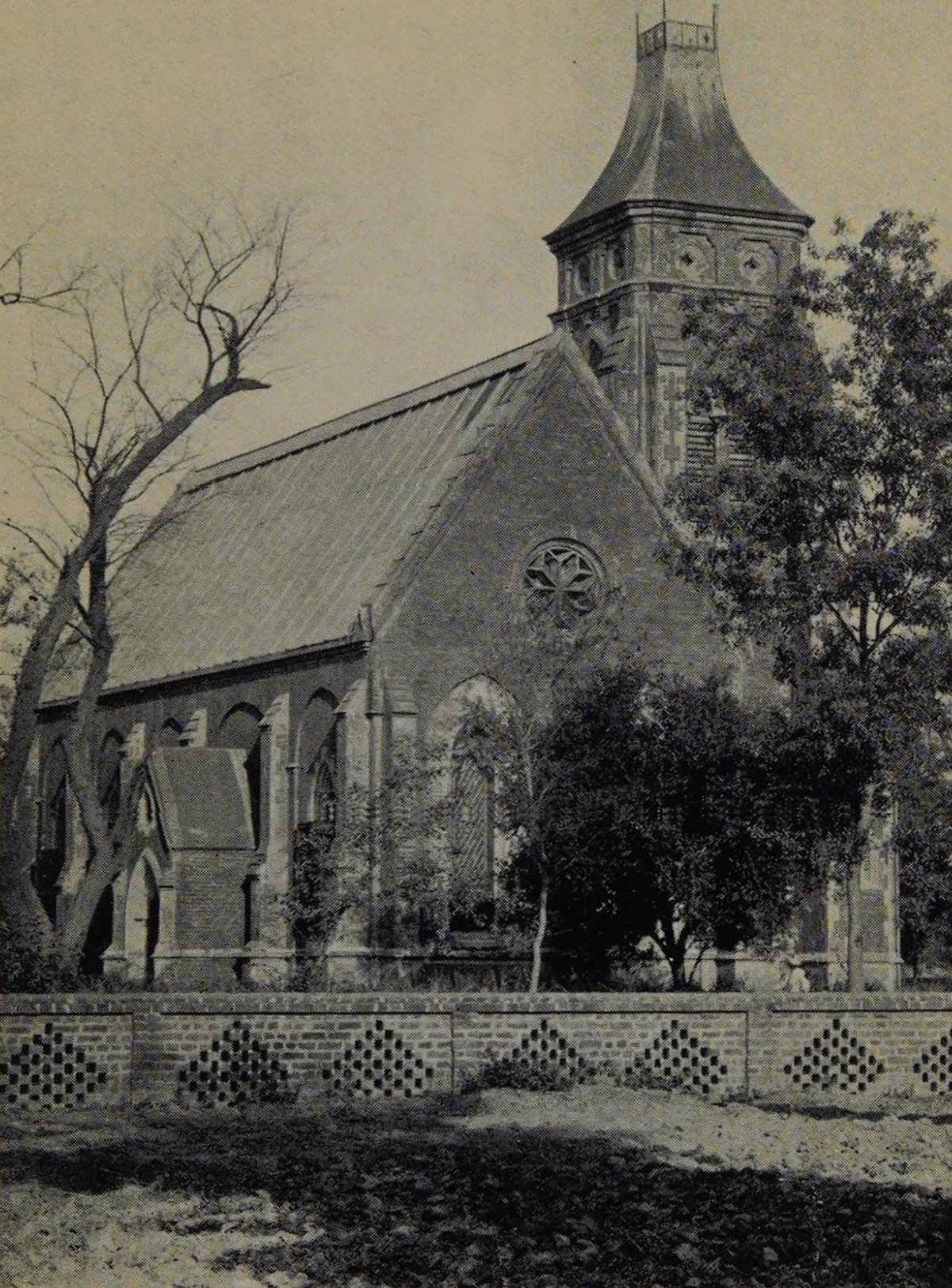
Church used as a prayer room during the conventions
Results of the 1906 Sialkot Convention
► People who came to mock and criticize were humbled by the presence of God.
► A burden for souls came upon the people.
► Visions of Christ and angels were granted by the Holy Spirit.
► A converted beggar was present, who had spent 11 years of his life conducting the severest forms of Hindu self-denials. His testimony caused great rejoicing.
► Revivals began to occur in other regions of India where the Presbyterians had missions. The areas of Fatehpur and Fatehgarh, between November 1905 and November 1906, began to experience many conversions, with many being baptized in the Holy Spirit.
► Instead of the Holy Spirit’s power diminishing with each year’s Sialkot Convention, the opposite was experienced.
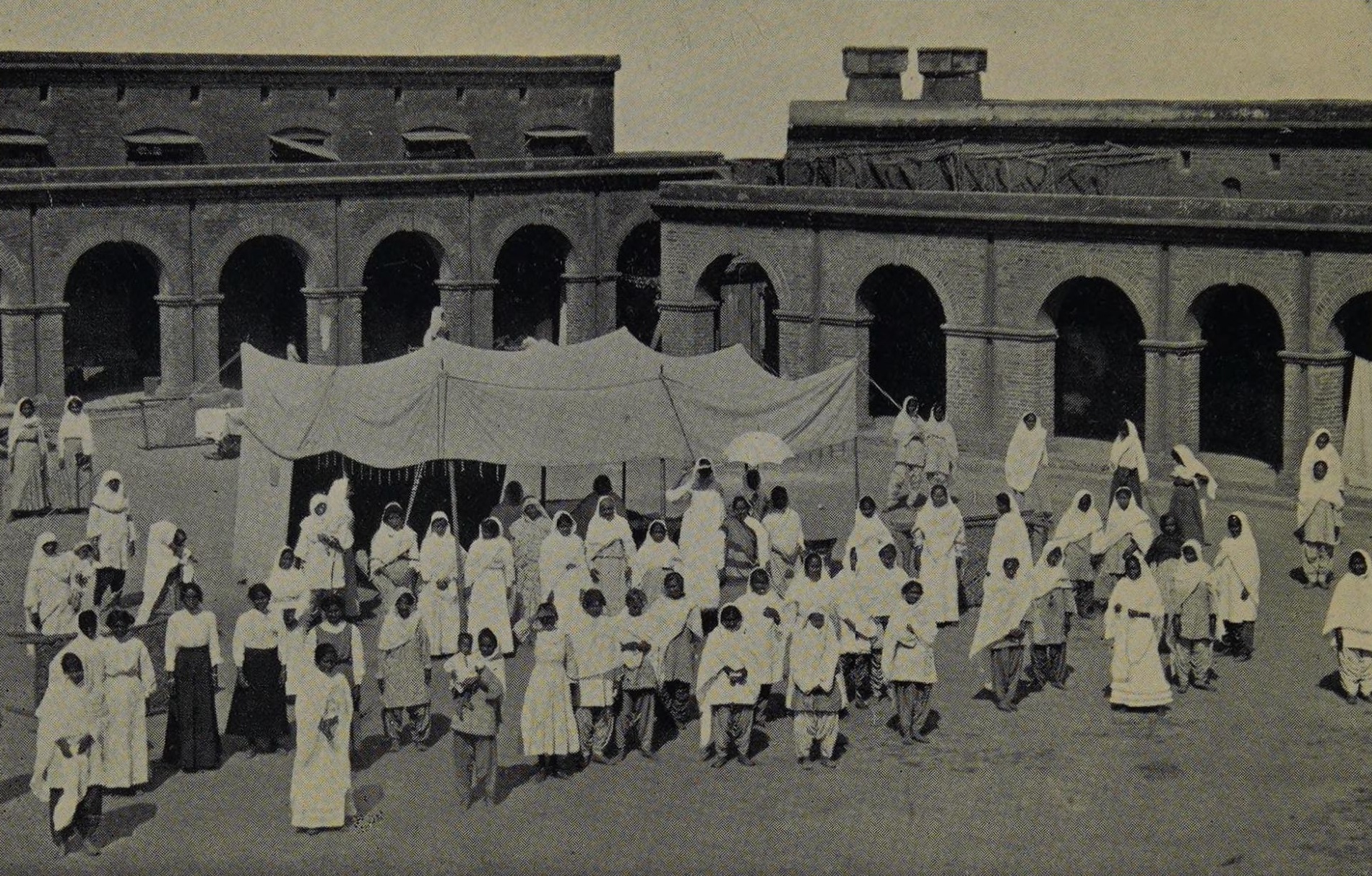
Some of the women at the 1912 convention
Annual Sialkot Conventions
The Sialkot Conventions continued for a number of years, as tremendous results were being achieved. During the conventions listed below, John Hyde received the assurance that he was to begin praying for a specific number of souls to be brought into the Kingdom of God, and they were not disappointed with the results. We don’t have the statistics, but here is what was prayed for, and some of the results that were recorded:
► 1908 Convention—one soul per day, and by the end of that year, 400 were brought into the Kingdom of God.
► 1909 Convention—two souls per day began to be prayed for, and 800 were gathered in during that year.
► 1910 Convention—four souls per day.
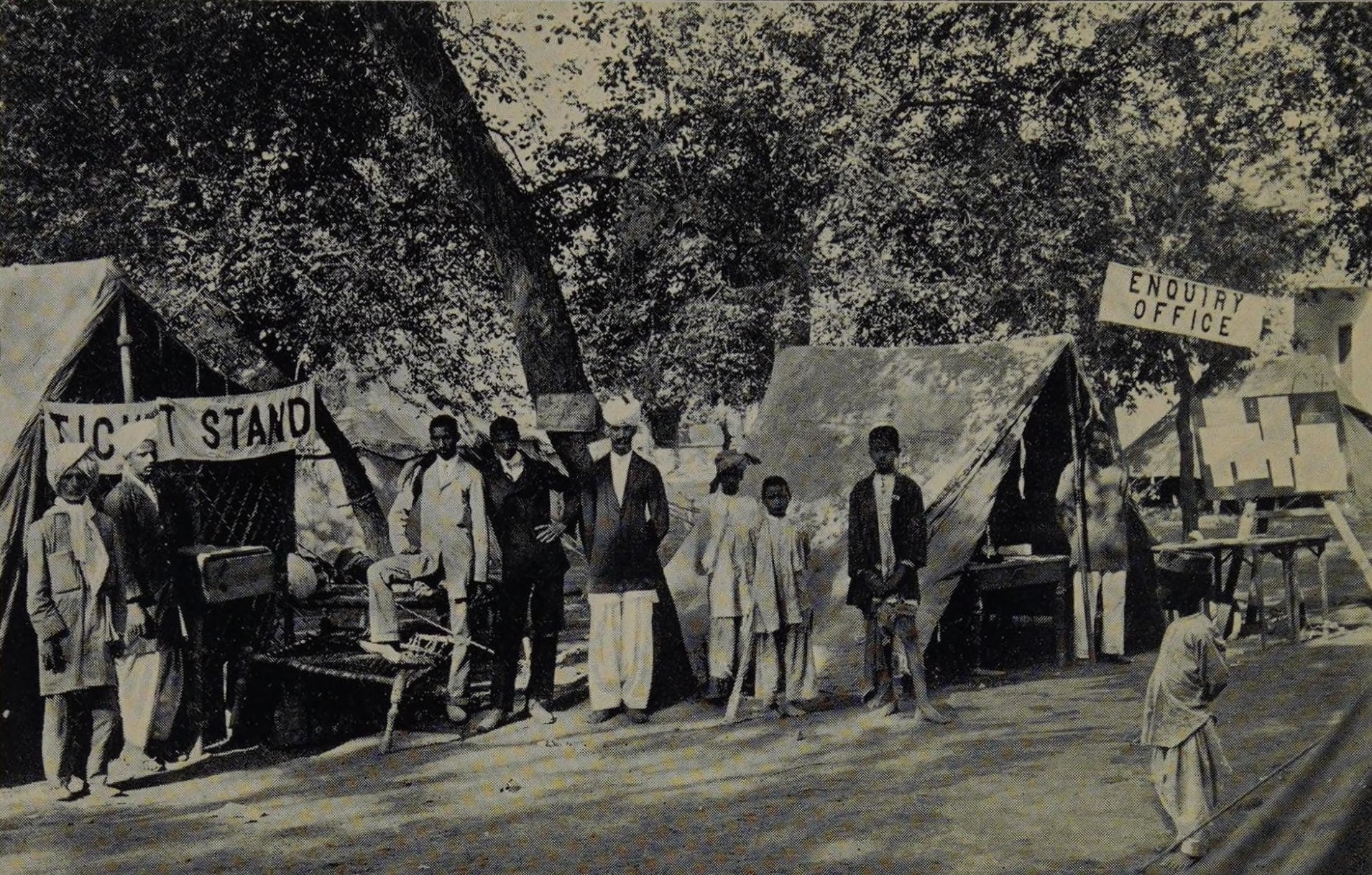
Volunteer workers at the 1912 Convention
Results of the Sialkot Prayer Conventions
► Revivals spread throughout India.
► National pastors, teachers, and evangelists returned home from these conventions with new zeal for God’s Kingdom and inspired the lives of thousands of others in their respective fields of labor.
► Missionaries, having had their lives renewed, wrote letters to others in India, as well as in their home country, telling what God was accomplishing. This news brought great rejoicing.
► Tens of thousands were born again due to the prayers at the Sialkot Conventions.
► The conventions continued for many years after this.
Only God and the recording angel can determine how much the whole body of Christ has been moved upon and benefited by the tremendous prayer force generated by the Holy Spirit in that prayer room at Sialkot. I am assured that tens of thousands have been born into the kingdom because of the soul travail at Sialkot.
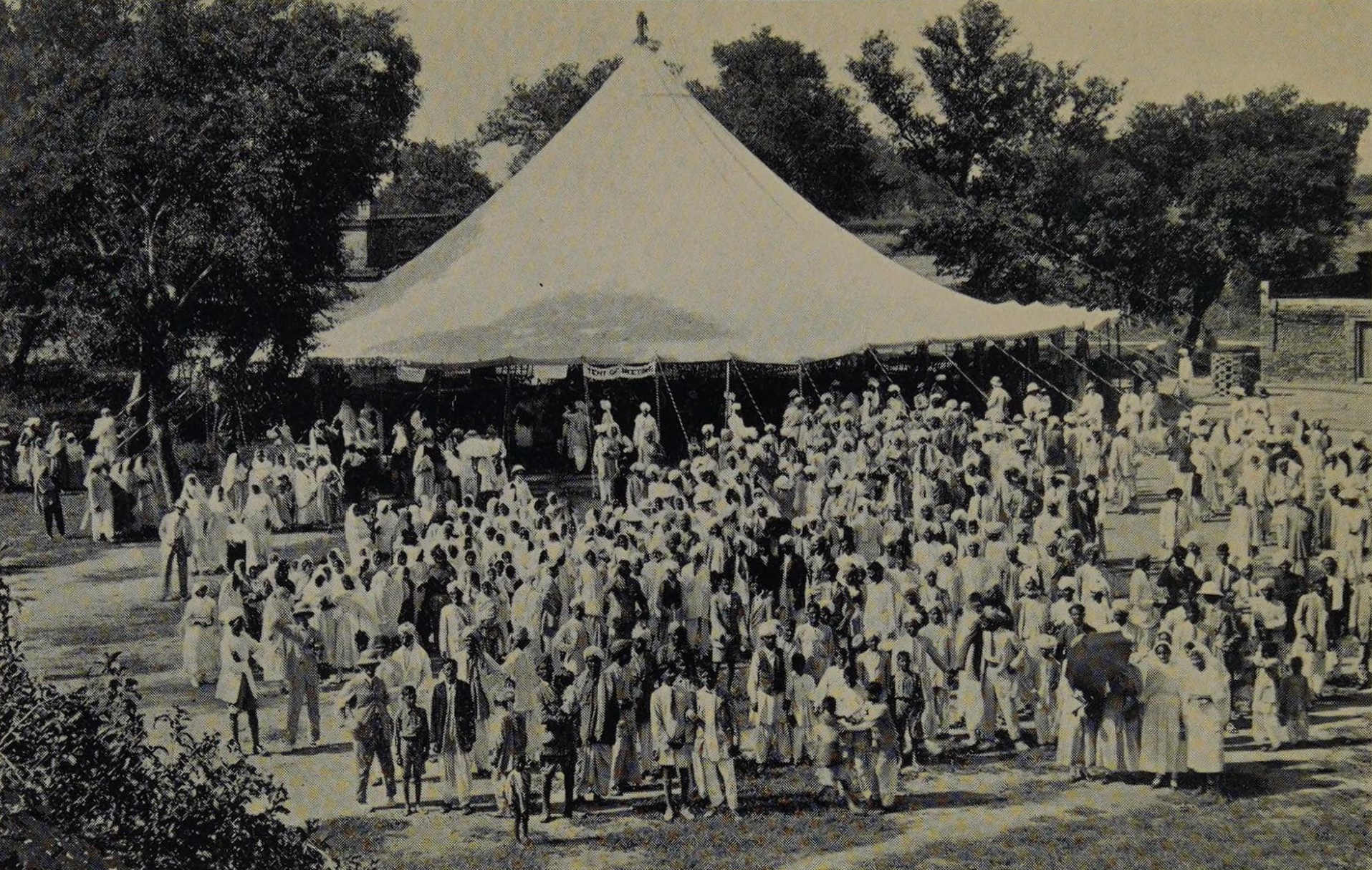
1922 Sialkot Convention
Sources
► John Hyde: The Apostle of Prayer by Francis McGaw
► A Present-day Challenge to Prayer by John Hyde and edited by Capt. E. G. Carré
► Praying Hyde by E. G. Carré
► Revival in India by Helen S. Dyer
Return to List of Revival Stories
Chet & Phyllis Swearingen:
Office: (260) 920-8248
romans1015@outlook.com
Beautiful Feet
P.O. Box 915
Auburn, IN 46706

